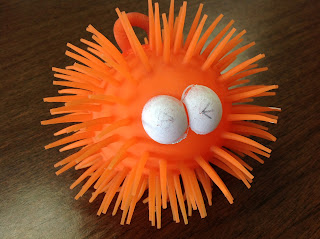review of one of my favorite apps: Make Dice
I'm starting a new regular feature here on Schoolhouse Talk:
Appy Hour. These posts will feature my most favorite apps that get used constantly in therapy. Apps that make my job easier. Apps that are customizable or can be used with a variety of students. Apps that my students also love using. Lots of the apps I use I have discovered through word of mouth, so I hope I can help fellow educators find some useful tools as well. First feature:
I love love love
Make Dice! I have been using it for about a year now with students of all ages and all goal areas. There is a free 'Lite' version and a paid full version ($2.99). I have the Lite version.
THE CONCEPT:
*Create custom dice with words/numbers/etc. for use as you see fit.
FEATURES:
At the bottom of the screen are your controls to roll the dice, create or add new dice, and change settings. Shake the dice by pressing the circle arrow or moving the iPad. I prefer
the iPad stays flat on the table and students push the button instead
of moving the iPad.
Press and hold dice to change to a different one. Press the plus sign to add a new dice. You can use up to six dice on the table at one time.
It's also easy to create new dice. On the edit dice screen you can enter the words or numbers you want on the dice, give the dice a name, and change the color.
 |
| Settings Menu |
|
The settings menu allows you to edit the dice list, adjust the table color, and turn on/off sounds. In the full version you can also turn on/off accelerometer, which I'm not exactly sure what that means, but I think it has something to do with how the dice move when you shake.
HOW I USE IT:
 |
| the list of dice I have created |
*Articulation Goals: I have made a lot of dice for different phonemes my students work on. I color code them by phoneme so I can quickly find the one I am looking for. Select a phoneme die and a number die. The number tells the student how many times to say the word.
 |
| say the word "skip" three times with your good snake sound |
*Language Goals: Create dice full of categories, antonyms, synonyms, multiple meaning words, etc. A number die tells how many items in a category the student needs to name. It can be challenging to think of six different salty foods, but
we like challenges!
 |
| name three different sports |
|
*Fluency Goals: roll the number dice; have students to say that many words/sentences using their easy speech strategies.
QUICK TIP:
Enable Guided Access when using this app. There are ads at the top of the screen that often get pushed, but with Guided Access the ads can be blocked (still appear on the screen though). Also, be sure to turn off the screen rotation, otherwise any
bumps to table result in dice shaking.
PROS:
*Can be used with a variety of goal.
*It is easy to use and new dice can be made quickly during speech sessions if necessary.
*My students love it. They especially like pushing the button approximately 93 times in a row trying to really get the dice rolling :)
*No more dice rolling off the table onto the floor!
*In full version you can add pictures to dice (I think this could be worth the price of the full app itself as it opens up a whole new world of possible uses, especially for using with non-readers).
CONS:
*The app comes pre-loaded with some couple/personal dice for making decisions,
which cannot be deleted (But next time I can't decide if I'm sorry or if
my husband is sorry, I know where to turn!)
*Any bumps to the table or iPad cause the dice to roll which can interrupt a student's turn, but this feature can be turned off by enabling Guided Access.
*Ads are on screen constantly and are easily pushed, but can be disabled with Guided Access. (Seriously, Guided Access is such a great feature that comes with the iOS 6 upgrade - if you aren't using it you should be! Tutorial coming SOON.)
Disclaimer: I was not paid for this review. I simply love this product. The statements are my own opinion.
Leave a Comment: How would you use this app in your own therapy sessions?
*P.S. My husband thought of the Appy Hour name and designed the logo - isn't he so creative?!






























